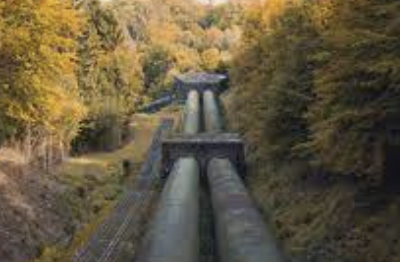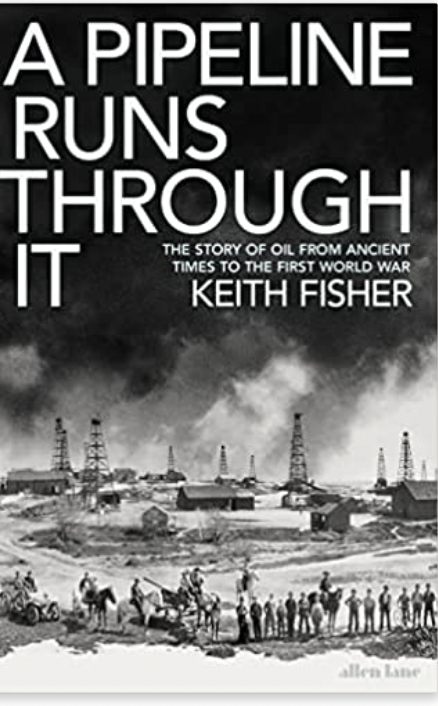
Oil: Pernicious influence on human history


Pearson, a British industrialist, had done a deal with the anti-American government of Mexico for a 50-year oil concession that covered much of the state of Veracruz, a 1839 feet ( 558 meters ) Dos Bocas well exploded into a broiling fountain of oil that rose 1000 feet into the air.
Keith Fisher’s new book reveals history and literature from the time of Babylonians to the early 20th century with “ beautiful oil turning up everywhere, including in the writings of Herodotus and the poetry of Ovid, and pre-industrial history of petroleum through to large-scale production I the mid-nineteenth century and the development of a dominant, fully-fledged industry by the early twentieth century. This was always a story of imperialist violence, political disenfranchisement, economic exploitation, and environmental destruction including the near total eradication of the Native Americans of New York, Pennsylvania, and Ohio.
In pre-Columbian California, native Americans used it to rainproof their humble house, on Barbados, indigenous islanders relied on it as an ointment for sore limbs, and Mexico’s Olmec peoples painted it into religious statuary for decorative purposes. In pre-Islamic Persia, it may have been the source of a whole religion revolving around temples of perpetual fire, produced by steams of oil and gas seeping up from the ground. Oil also makes its appearance in this book as a weapon of war: the Byzantines employed as part of a particularly lethal ship-mounted flame-thrower ( though lobbing burning oil-based projectiles at your enemies dates as far back as the Peloponnesian War.
In A Pipe Runs Through It, the modern, industrialised oil industry was born in Titusville, Pennsylvania, in 1859, pioneered by prospectors hoping to supply the growing demand for oil-burning lamps, which traditionally relied on Whale oil, Fisher paints a brilliantly vivid picture of what this meant for western Pennsylvania’s idyllic natural environment. In the 1850s, Titusville was a quiet, backwoods place, its peace is broken only ‘ by the tapping of a woodpecker, the distant chopping and sawing of lumberjacks and the Whine of waterwheel-or Steam-powered sawmills’. Once the Pennsylvanian oil rush took off, speculators descended on the area like ‘a plague of locusts’ and the whole valley soon resembled a post-apocalyptic wasteland. Uncontrolled wells shot oil into the streets and rivers, derricks appeared in every backyard, catastrophic fires broke out, the air reeked of gas and petroleum and there was not a green thing anywhere in sight.
This chaotic new industry was brought under control by an accountant from Cleveland, Ohio, John D Rockefeller. In 1870, Rockefeller created Standard Oil, and via various shady business practices and collusion with local legislators, succeeded in taking over most of the area’s refining capacity. Rockefeller completed his conquest of the oil region by gaining control of the oil transit system. The first pipelines had been constructed in the early 1860s and Rockefeller build up the network creating a “ sprawling pipeline empire” that enabled him to pump oil directly to the coast. In the process, he crushed independent producers and eventually brought even the powerful railroad companies to heel. By the 1880s, Standard Oil not only controlled the American market but also was shipping its oil and petroleum-based products into every corner of the world, turning Rockefeller into one of the great titans of the Gilded Age.
As US oil export spread across the globe, other countries sought to develop their own resources, Faced with a single American company with almost 90 per cent of the Russian market, in the 1870s the Nobel brothers Robert and Ludwig- the ‘Russian Rockefellers’ began large-scale exploitation of the oil region around Baku. In Russian Azerbaijan, Russian engineers pioneered the first modern oil tanker, to send oil up the Volga for distribution throughout Russia, and later developed vessels capable of crossing the Atlantic and Pacific. By the 1890s, the Russian Empire had overtaken the United States as the world’s largest oil producer, a status it held until the revolution of 1905. When Europe’s colonial powers began developing the resources of their empires. The Dutch exploited the oil resources of northern Sumatra ( in modern Indonesia), where the companies that would later form the Royal Dutch Shell were born amid a bloody war of pacification. After the Third Anglo-Burmese War of 1885, the British began exploiting those of Burma. Following a major strike in Persia in 1909, Britain’s Burmah Oil Company gave birth to Anglo-Persian, which became BP.
In the extraordinary decades leading up to 1914, the first age of globalization, petrol-fuelled vehicles, pioneered in the 1880s and 1890s, took off after 1900, their number going from 1, 500 in Britain and the United States in 1900 to 150, 000 in Britain alone by 1908.
Fisher highlights Winston Churchill’s remarkable career: as First Lord of the Admiralty after 1911, he pushed through the British fleet’s transition to oil power amid concerns over the security of supply against significant establishment opposition. British diplomats in 1911, faced with tough Turkish bargaining over oil exploration in their empire, discussed the benefits of forming independent relationships with the Arab tribal leaders of the Ottoman territories, including an upstart 1bn Saud in Arabia.
His descriptions of each new oil-producing region of the world relate to how in the beginning there was racism, colonial violence, and genocide. Oil’s consequences are always explained in terms of environmental degradation and a net loss to humankind, each new strike seems to be inaugurated by the shooting of thousands of barrels of oil into a pristine river.
